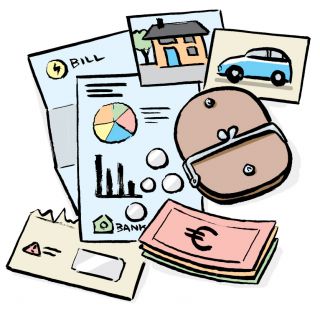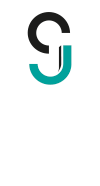Counting Poverty and Deprivation in Ireland

The Central Statistics Office (CSO) is expected to publish the EU-SILC data for 2020 on Friday, 17th December. This data will tell us what proportion of the population of Ireland were living below the poverty line; what proportion experienced enforced deprivation; and what proportion experienced both - also known as "consistent poverty". But before the data is released and the numbers discussed, we're taking the opportunity to provide a quick explanation of what it all means.
How is poverty in Ireland counted?
The data comes from the EU SILC - the Survey on Income and Living Conditions. This survey is conducted by the CSO every year and it provides us with some really important information on things like poverty, deprivation, income levels, income inequality and so on. Typically about 13,000 people, from approximately 5,500 different households, are surveyed every year, and the results are compared with the Census to make sure that the final output is representative of the population. This is where we get our official measurements of poverty and deprivation.
What do we mean by poverty?
When we discuss poverty in Ireland, we aren’t talking about absolute poverty, of the type that’s experienced by millions of people in the developing world. Such measures are not really appropriate in a developed country like Ireland. What we use here is a measure known as “relative poverty”. Under this measure a household is considered to be in poverty if their income falls below the poverty line. That poverty line is measured as 60 per cent of the median equivalised disposable income in society. This is an internationally agreed and recognized way to measure relative poverty. To explain what that actually means, however, we need to look at a few of its components:
- First, disposable income. This is simply the amount of income a person has left over once their income has been taxed, and they’ve received whatever welfare payments they’re entitled to. After that, what’s left over is their disposable income.
- The median simply means the middle. So to calculate the median income, you simply find the income at which half the population is above and half is below. It is – quite literally – the middle income in society. We use the median rather than the average so that the small number of people with VERY high incomes do not skew the data. Eurostat is the the European Union’s statistical organisation and it has deemed 60 per cent of the median disposable income to be the poverty line.
-
Finally, the income is “equivalised”. This means that the size of the household is taken into account when measuring poverty. This is important because a certain level of income might be sufficient to afford a decent standard of living to a single person living alone, but it may be a very different story if that person also has to provide for a partner and children. So household size is important, and therefore we must “equivalise” the income.
Say the poverty line is €12,000 for the sake of this example.
That means that the poverty line is €12,000 for a 1 person household. Any individual will less income than that is living below the poverty line.
If the household is made up of 2 adults, we add an extra 66% to the line. 66% of 12,000 is 8,000, and so we have a poverty line for 2 person that household of €20,000. A 2 person household with less than €20,000 a year would be judged to be living below the poverty line. You would add another 8,000 for a 3rd adult living in the household, leaving you with a poverty line of €28,000, and so on.
Then for each child in the household, we would add 33 per cent of our €12,000 poverty line, or €4,000 per child.
So a household with 2 adults and 2 children has a poverty line of €28,000.
€28,000 might be enough money to give one adult a reasonably decent lifestyle, but in a household with 2 adults and 2 children, an income even just slightly below €28,000 would put that household in poverty in our example.

GIVING A VOICE TO THOSE
WHO DON’T HAVE A VOICE
When you support Social Justice Ireland, you are tackling the causes of problems.
Why is the rate set at 60 per cent?
To understand this we must remember that relative poverty and deprivation are essentially forms of social exclusion. In every society there is a certain amount of money needed to achieve what’s considered a minimum socially acceptable standard of living in that society. That amount of money varies from country to country and depends on a lot of things, including how developed the country is, cultural differences, and of course the cost of living.
Using 60 per cent of the middle income as a poverty line reflects the fact that those with incomes close to the middle (even if a little below it) can have a lifestyle that’s close to the social norm, but once you have gone a certain distance below the middle, it is increasingly difficult or even impossible to achieve that. 40 per cent below that middle has been deemed too far for this purpose, so 60 per cent of the middle income has been designated by Eurostat as the poverty line.
If you or your household can’t achieve that socially acceptable standard of living, whatever it happens to be in society, you’re likely to be in some way socially excluded.
What about Deprivation in Ireland?
This can mean different things to different people, but for something to be measured, it has to be defined. In Ireland we measure deprivation as follows:
There are 11 indicators of a person’s ability to participate in society in a way considered the social norm. If a person is involuntarily excluded from two of these 11, they are considered to be experiencing enforced deprivation.
Those 11 things are:
- Owning two pairs of strong shoes.
- Owning a warm waterproof coat.
- Being able to buy new clothes, that is, not second hand.
- Being able to eat a meal with meat, chicken, fish (or vegetarian equivalent) at least every second day.
- Being able to have a roast joint or its equivalent once a week.
- Being able to heat their home.
- Being able to keep the home adequately warm.
- Being able to buy presents for family or friends at least once a year.
- Being able to replace any worn out furniture.
- Being able to have family or friends for a drink or meal once a month.
- Being able to have a morning, afternoon or evening out once a fortnight, purely for entertainment purposes.
So if you are involuntarily excluded from two or more of these 11, you are experiencing enforced deprivation.
Deprivation, then, covers a wide spectrum of things from being able to heat your home and clothe yourself to being able to eat to a reasonable standard, and do a small bit of socialising. All of these are things most people would consider to be reasonable expectations in a rich developed country like Ireland.
In every society there are certain things that one must do and certain possessions one must have to achieve what’s considered a minimum socially acceptable standard of living in that society. What those things are varies from country to country and depends on lots of things, including how developed the country is, cultural differences, and of course the cost of living. If you can’t afford to properly clothe yourself, including owning two pairs of decent shoes, or heat your home, socialise occasionally (and we’re only talking every couple of weeks here), then you’re excluded from a normal life in your country, and you’re in some way socially excluded.
Limitations
The current 11 measures of deprivation have been in place since 2007, and society has undoubtedly changed in the last 14 years. There are likely certain items that should be taken into account but are not. For example, having reliable internet access would be considered by most people nowadays to being a pre-requisite for having a standard of living close to the social norm in the year 2021, yet there is no mention of smart phones, internet, laptops or anything related to communications and internet access in the deprivation measures. The CSO is currently reviewing these indicators. However, notwithstanding this, the data provided each year, and the trends that are possible to analyse, are informative and offer some insight into the changes in income over recent years on households and living standards across the State.

GIVING A VOICE TO THOSE
WHO DON’T HAVE A VOICE
When you support Social Justice Ireland, you are tackling the causes of problems.
What can we do about Poverty and Deprivation?
First of all, there needs to be an actual acknowledgement that Ireland HAS an on-going problem with poverty and deprivation. That’s something that hasn’t yet happened. The numbers are released every year showing hundreds of thousands of people in these situations, and politicians comment on how regrettable it is, but focus on the positives, whatever they might be in any given year.
Some other policies that should help include:
- Recognise the problem of the ‘working poor’ (people in employment who are living below the poverty line). Make tax credits refundable to address the situation of households in poverty which are headed by a person with a job.
- Support the widespread adoption of the Living Wage so that low paid workers receive an adequate income and can afford a minimum, but decent, standard of living.
- Conduct an in-depth social impact assessment prior to implementing proposed policy initiatives that impact on the income and public services that many low-income households depend on. This should include the poverty-proofing of all public policy initiatives.
- Set a benchmark for core social welfare payments, Social Justice Ireland propose 27.5 per cent of average earnings as a move towards the Minimum Essential Standard of Living, so that welfare-dependent households are protected from falling further into poverty.
- Introduce a cost of disability allowance to address poverty and social exclusion of people with a disability.
Most importantly, in the long erm. Ireland must move towards introducing a basic income system. No other approach has the capacity to ensure all members of society have sufficient income to live life with dignity.
More Information
Social Justice Ireland publishes Poverty Focus every year, providing a "deep dive" analysis of the latest poverty and deprivation data. Our latest addition is available to download.

GIVING A VOICE TO THOSE
WHO DON’T HAVE A VOICE
When you support Social Justice Ireland, you are tackling the causes of problems.
